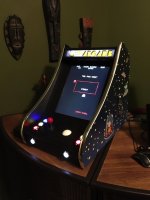paul.brett
Experienced Member
Not strictly vintage, but I wanted to share the MAME Arcade Cabinet I built over the summer, currently run by a Raspberry Pi 2 running RetroPie.
https://photos.app.goo.gl/Se1ZsTaCRZdmGUrB6
Thanks for looking.
https://photos.app.goo.gl/Se1ZsTaCRZdmGUrB6
Thanks for looking.

